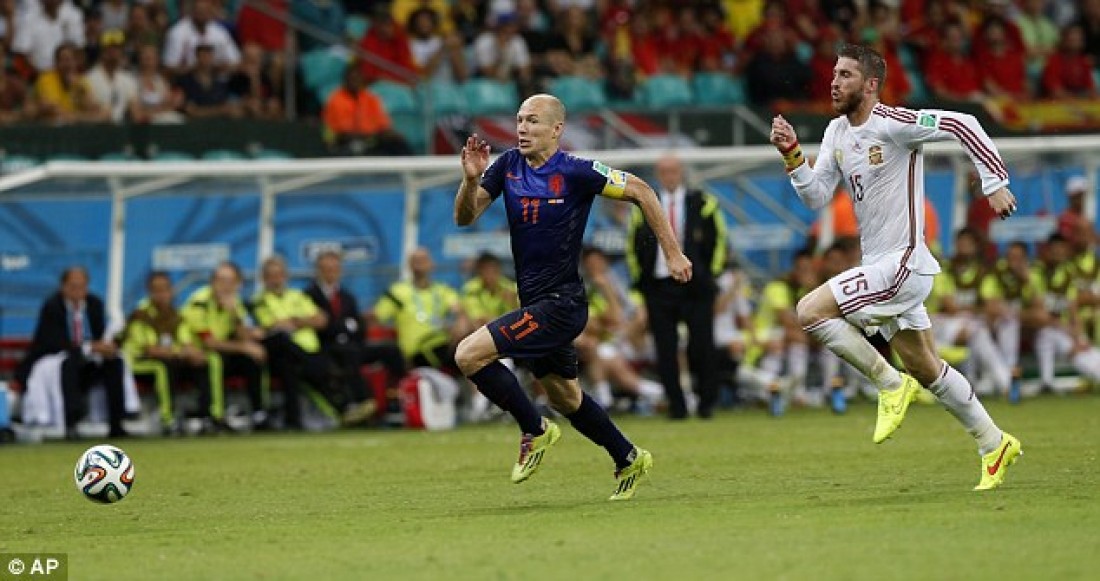I have written and published several articles highlighting the importance of coaches and fitness coaches using objective, factual methods of analysis for assessing soccer players’ performance, from both the physical, as well as the technical and tactical viewpoints. Using standardized, objective methods of player assessment minimizes – and in some case eliminates – the influence of coaching bias which can occur as a result of subjective, opinion-based analysis. In the book ‘The Sports Gene’ by David Epstien (which should be required reading for any fitness coach working with athletes, including soccer players) the value of objective analysis is clearly apparent. According to Epstein, one objective fact that is of specific importance in sports including soccer, is that speed – and in particular an athlete’s percentage of fast-twitch muscle fibres, which are responsible for increased speed – is an excellent predictor of performance. Simply put, this means that players at higher levels of play (professional and National Team soccer, for example) are faster, and have better recovery abilities, than players at lower levels of play (amateur and recreational soccer).
Below is an excerpt from one of the few instances in which Epstein discusses soccer in The Sports Gene, including quotes from Danish fitness expert, and fitness coach for Copenhagen F.C. in the Danish First Division, Jesper Andersen:
“Soccer coaches all want the fastest athletes, so Andersen wondered how it could be that many Danish pros have fewer fast-twitch fibres than an average person on the street. “The guys that have the very fast muscles can’t really tolerate as much training as the others”, Andersen says. “The guys with a lot of fast-twitch fibres that can contract their muscles very fast have much more risk of a hamstring injury, for instance, than the guys who cannot do the same type of explosive contraction but who never get injured.” The less injury-prone players survived the development years, which is why the Danish elite level ended up skewed toward the slow-twitch.”
Interestingly, several studies investigating muscle fibre-type distribution amongst professional soccer players have indicated that in many other countries, the professional players have a higher percentage of fast-twitch muscle fibres, and thus are “faster” than the players in the lower levels. Furthermore, there have been numerous match analysis studies (comparing the total number of sprints, total amount of high intensity running, and mean sprinting speed amongst professional and amateur soccer players) which have confirmed that professional soccer players run faster, and do more fast running, than amateur soccer players. So why are the professional players in Denmark “skewed toward the slow-twitch” as Andersen indicates? The answer most likely lies in talented player identification and selection.
A second objective fact mentioned repeatedly in The Sports Gene is that speed and, to a lesser extent, high intensity running ability, are largely determined by genetics, and that athletes (including soccer players) who possess these abilities are far more likely to reach the higher levels of play. If we look at the sport of soccer objectively, and we accept the (objective) fact that speed and high intensity running ability are determined by genetics, then soccer coaches and fitness coaches in high performance environments should be identifying and selecting players based on these abilities, especially in the older youth (U14-up), and adult age categories. This does not necessarily mean that player identification at higher levels of play should be focused exclusively on speed and high intensity running ability but rather, that coaches and fitness coaches should place a high priority on identifying and selecting players based on these abilities. If there is a choice to be made between selection of two players with similar technical and tactical abilities, the edge should go to the player with better speed and high intensity running ability.
Soccer players’ speed characteristics should be measured early (starting at age 10-12) and consistently, using objective assessment tools such as photo-cell timing gates (to assess linear running speed), and the Yo-Yo Intermittent Recovery Test (to assess high intensity running ability). Players who have been identified as having superior speed and high intensity running ability, especially when this identification happens at a young age, should be given priority to be placed in high performance training environments where they can maximize the technical and tactical aspects of their game. The volume and intensity of the physical training these players receive, as per Andersen’s suggestions, should be tailored to their own specific muscle physiology, with a combination of relatively high intensity and relatively low volume, in order to maximize their speed and high intensity running ability while at the same time minimizing their risk of injury.
The use of objective facts, rather than subjective opinions, should always be of paramount importance to soccer coaches and fitness coaches when assessing, selecting, and training their players. Because it is an objective fact that speed and high intensity running ability are both good predictors of performance in soccer, as well as determined more by genetics than by training, coaches and fitness coaches must place a high priority on selecting for these physical abilities in their talent identification and selection processes. Becoming an elite level soccer player requires world class technical and tactical ability, but it also requires world class speed, and this fact cannot be ignored by soccer coaches in high performance environments, even in our own country.
I’d love to hear your thoughts about this topic. Drop me a line here to get the conversation started


Leave A Comment